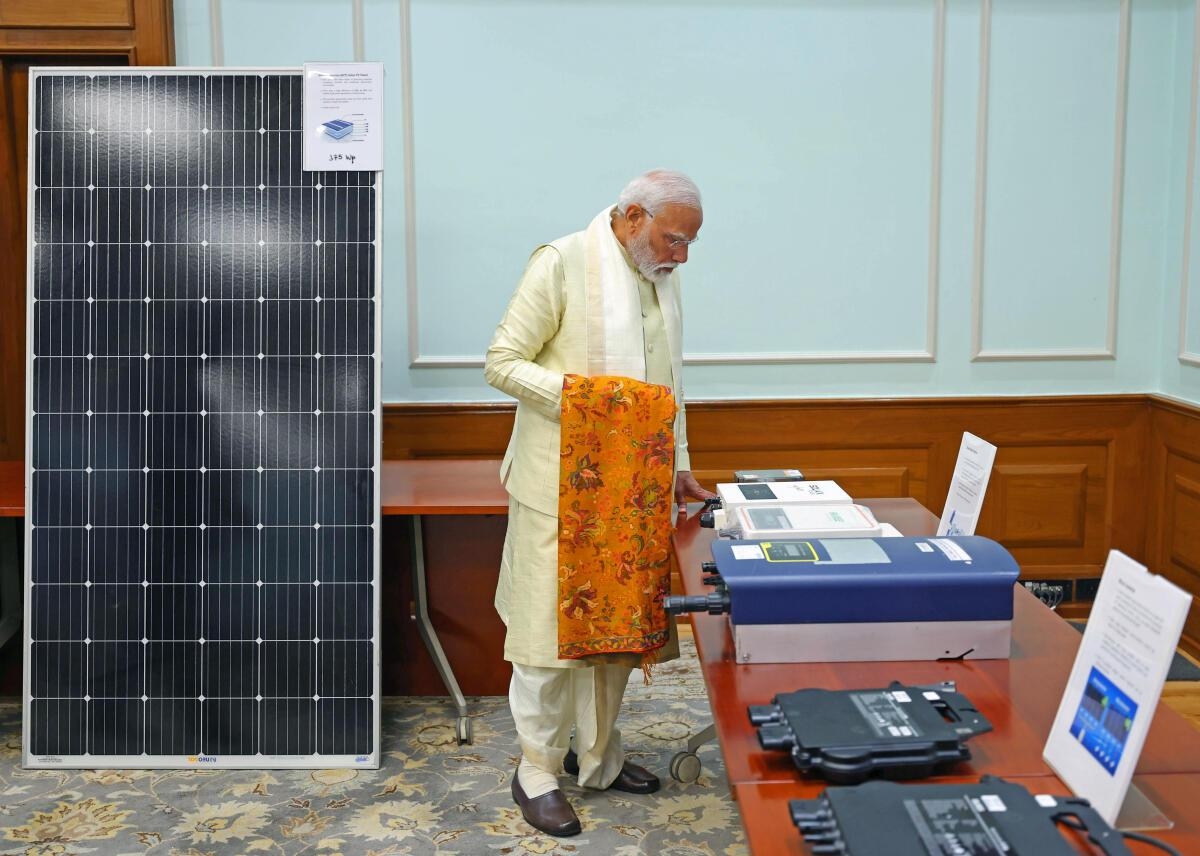India–US Trade Tensions Rise Over Steel and Auto Tariffs NMDC Limited reports a 38% drop in Q4 FY24 consolidated net profit RINL to Raise $23 Million Through Land Sales Amid Crisis

Following the Ram temple ceremony in Ayodhya, Prime Minister Narendra Modi launched a scheme to install rooftop solar systems in 1 crore homes. This is his first scheme following the consecration ceremony.
"My resolve that every Indian family should have a solar roof system installed on their roof was reinforced even more today, on the auspicious anniversary of Ayodhya's dedication. After returning from Ayodhya, I decided that our government would start the Pradhanmantri Suryodaya Yojana," which aims to install rooftop solar on one crore homes," Modi tweeted.
He continued, "This will reduce the electricity bill of the poor and middle class and make India self-reliant in the energy sector. "
The Indian government, under Prime Minister Modi, introduced the first solar scheme with an ambitious target of achieving 1GW of solar power by 2022. However, as the deadline approached, it became evident that India would fall short of its goals. By 2022, the country had only generated 63.3 GW of solar power capacity, a fraction of the initial target. Furthermore, the intended objective of attaining 40GW of rooftop solar power by 2022 was also unmet. Instead, by the end of 2023, the country had only achieved a modest 11 GW of rooftop solar energy generation.
Solar energy is crucial in India's aspirations to generate 500 GW of renewable energy by 2030. It is vital to the country's efforts to reduce dependence on fossil fuels and combat climate change. Rooftop solar energy holds great promise for consumers, as it has the potential to contribute significantly to overall power cost reduction and enhance energy security. Additionally, it can significantly improve access to electricity in remote and hilly regions like the Northeast, where uninterrupted power supply from the grid is often challenging.
Also Read : Coal India wins bid for solar power project in Gujarat Thermal power plants use 68% of the normative coal stocks: CEA